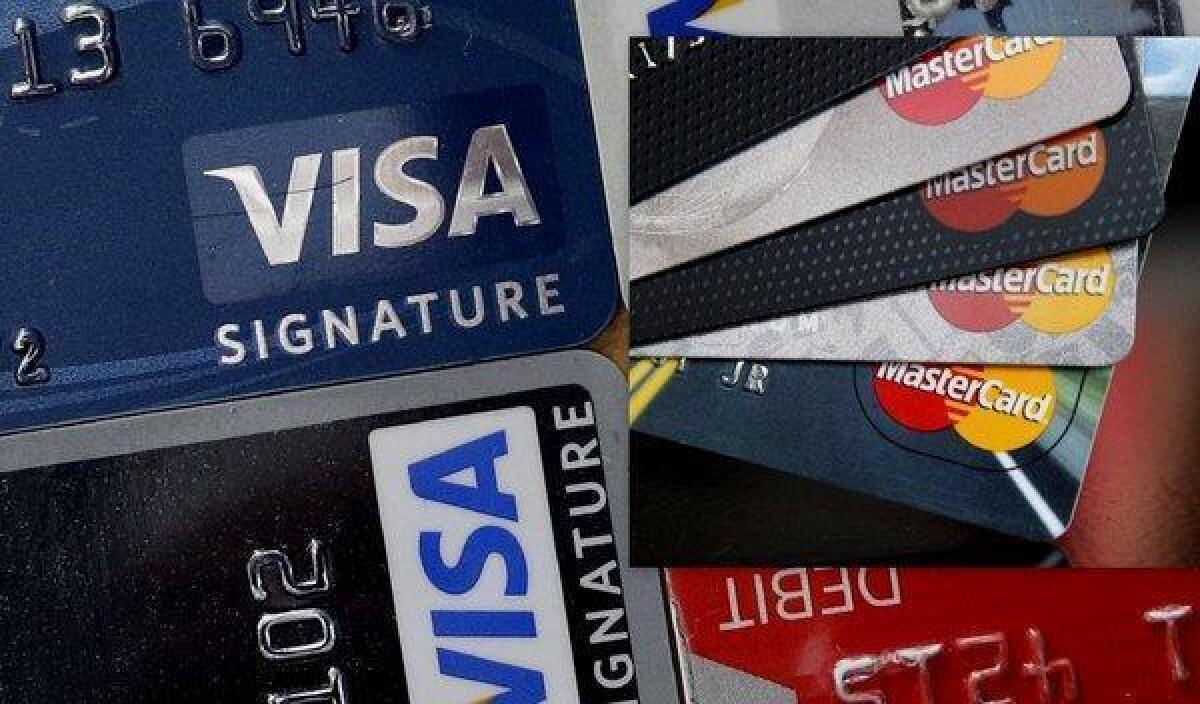Maximizing your credit card rewards travel

These days, credit card companies either love ya or they love ya. And Americans love them back, running up a revolving bill of $853.6 billion as of May and carrying individual balances of almost $5,000 per person, according to CreditCards.com.
For credit card companies, the promise of the big ka-ching spurs them to entice us with deals that reward our spending, a bonus for a traveler who’s intent on keeping down costs.
To benefit, you must know the new kids on the block and play the game with your eye on the prize — the prize not being a dozen or so credit cards with big, fat balances.
That’s key, says Brian Kelly, to making the cards work for you. Kelly, who writes ThePointsGuy.com, a website that tells you how to maximize your rewards travel, says the idea is to get all the good out of them that you can, then get rid of them.
Doesn’t that make you a credit card cad? I asked him during a recent sit-down.
Not really, he said. You must be a good customer, and that doesn’t mean using the card, getting the reward and immediately ditching your little plastic pal. At least, he said, wait awhile. Just don’t wait so long that you’re charged the annual fee that’s often tacked on after the first year, when the fee often is waived.
There’s a fine line between being a scoundrel and a savvy user.
For savvy users, here are a couple of cards that have caught Kelly’s eye and one that may work well for the small-business owner. Note that offers can expire, so availability is not guaranteed.
Barclaycard: Not long ago, the newest of the new and the most fun kid on the block was the Chase Sapphire card, the heavyweight blue card that rewarded new customers with 50,000 points with an initial “spend,” which refers to the amount you need to run up to get the reward.
Now say hello to the Barclaycard Arrival World MasterCard. “They launched this Arrival card late last year … and it took a while for people to catch on,” Kelly said.
Among the perks: 40,000 points when you spend $1,000 in 90 days, double points on every purchase thereafter, the annual $89 fee waived for the first year, plus 10% of your points back when you buy travel.
Info: https://www.lat.ms/16AT0LP.
Club Carlson Premier Rewards Visa Signature card: This one is based on Radisson hotels’ rewards program. “It is another hot one that seemed to come out of nowhere,” Kelly said of this card, which is slightly more niche.
Among the perks: 50,000 points after your first purchase and 35,000 more if you spend $2,500 in the first three months. You get 10 points for every $1 you spend at Radisson hotels, which include Radisson Blu (upscale), Radisson, Park Plaza, Park Inn and Country Inn & Suites.
How well does it work? If you choose to stay at the Park Inn in Fresno, a Category 1 hotel (there are six categories), you’ll use 9,000 of your points a night. If you stay at the Radisson at Fisherman’s Wharf in San Francisco, a Category 5 hotel, you’ll use 44,000 points a night. For your $75 annual fee, you get nine free nights in Fresno (plus change) or two nights in San Francisco.
If you stay two consecutive nights at a participating Radisson and use the card, you get the third night free.
Info: https://www.lat.ms/16AVVnF.
Chase Ink card: If you’re a business owner who pays off the monthly balance, you can try the Chase Bold Ink, which gives you 50,000 bonus points after you spend $5,000 in the first three months. The card also gives you five times the points on the first $50,000 (you don’t have to spend $50,000 to get the quintuple points) you spend in office supply stores and on cellphones, land lines, Internet and cable TV services.
There is no foreign transaction fee; the $95 fee for the first year is waived.
What if you don’t have a business? “Never lie on a credit card application,” Kelly said sternly. (I wasn’t going to, Brian. Honest.) But if you do run a small business, this is a way to leverage the expenditures you have to make for the things you want to do. For anyone who works for himself or herself, getting away from the boss may be even more important than for the rest of us.
Info: https://www.lat.ms/16AX12A
More to Read
Sign up for The Wild
We’ll help you find the best places to hike, bike and run, as well as the perfect silent spots for meditation and yoga.
You may occasionally receive promotional content from the Los Angeles Times.







